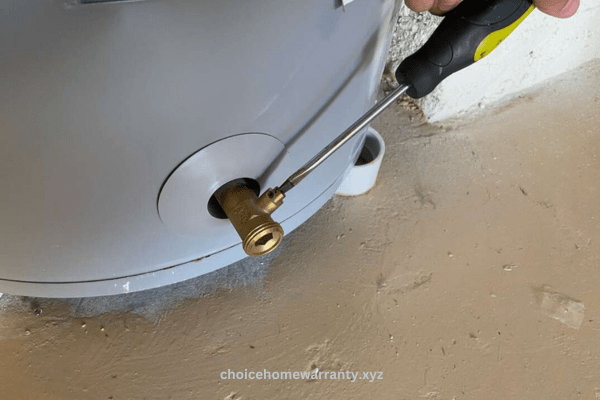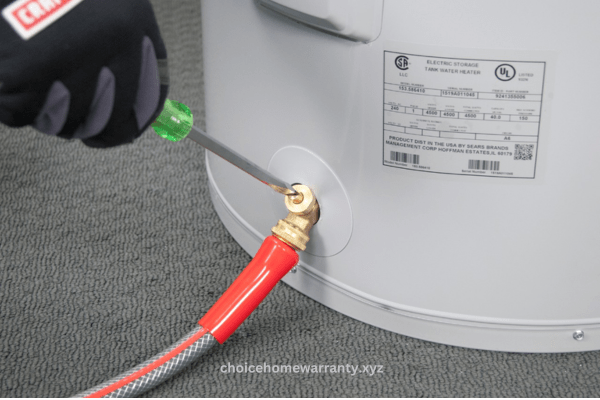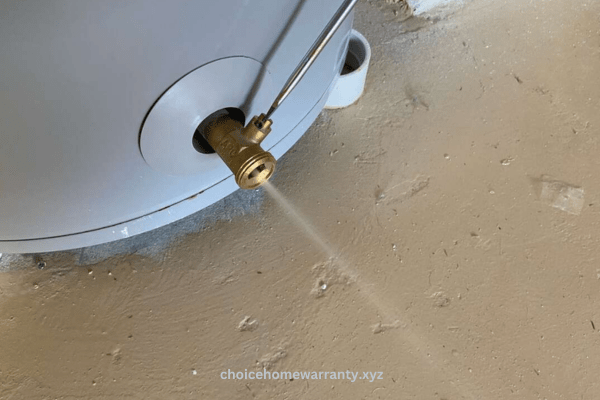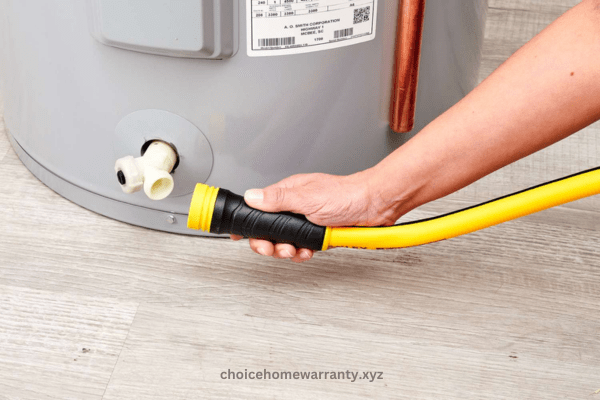If you’ve got an electric water heater, knowing how to drain it is crucial for its maintenance and longevity. One common misconception is that electric water heaters don’t need flushing like their gas counterparts, but this couldn’t be farther from the truth. Over time, sediment can build up at the bottom of your electric water heater tank, which not only reduces its heating efficiency but also increases the risk of corrosion and leaks.
When it comes to drain your electric water heater, following a few simple steps can make all the difference. Start by turning off the power and cold-water supply to the unit. Then connect a garden hose to the drain valve at the bottom of the tank and open it up to let the water and sediment flow out. After letting it run for a while, close everything back up and turn on the water supply again before restoring power to your unit.
Remember – regular maintenance like drain your electric water heater goes a long way in ensuring optimal performance and avoiding costly repairs down the line.
Signs It’s Time to Drain Your Electric Water Heater
Lukewarm Water
If you’ve been experiencing lukewarm water from your electric water heater, the culprit could be sediment buildup. Over time, sediment can accumulate in the tank and reduce the efficiency of the water heater, resulting in lower hot water temperatures. Draining the heater is an effective way to remove this sediment and restore it to optimal functionality. By performing regular maintenance such as this, you can ensure that your electric water heater continues to provide reliable and consistent hot water for your needs.
Strange Noises
If you notice strange noises coming from your electric water heater, such as popping or rumbling, it could be a sign of sediment accumulation in the tank. This buildup can cause the water to boil and create unusual sounds. To resolve this issue, you can drain the water from the tank and flush out the sediment. Regular maintenance like this can help keep your electric water heater functioning properly and extend its lifespan.
Rusty Water
If you notice rusty or discolored water coming out when you run hot water from your electric water heater, it could be a sign of corrosion inside the tank. Draining the water heater is an important step to take to inspect and address this problem. By regularly draining the tank, you can prevent corrosion and ensure that your water heater continues to function effectively. It’s crucial to address any signs of rust or discoloration promptly to avoid further damage to the water heater and maintain the quality of your hot water supply.
Safety Precautions Before Draining
Before commencing the draining process of an electric water heater, it is crucial to implement safety precautions. Begin by turning off the power at the circuit breaker dedicated to the water heater to prevent any accidents. Additionally, cut off the water supply to the heater to ensure that no new water enters the tank during the draining process. It’s important to allow the water in the heater some time to cool down before attempting to drain it, as hot water can cause burns or scalding. These safety measures are essential for a safe and effective draining process for an electric water heater.

Gathering Necessary Tools and Materials
Drain your electric water heater requires gathering the necessary tools and materials for a smooth process. First, you will need a garden hose of sufficient length to allow for easy drainage. Additionally, have a bucket on hand to collect the draining water and prevent any mess. A screwdriver will be necessary for opening panels or accessing valves, while a wrench is required to open the drain valve. With these tools and materials prepared, you can efficiently proceed with drain your electric water heater and ensure its proper maintenance.
Step-by-Step Guide to Draining an Electric Water Heater
Turn Off the Heater
Before beginning the draining process, it is important to turn off the electric water heater to ensure safety. Powering off the heater will prevent any potential accidents or electrical hazards while draining the water. This step is crucial in ensuring a smooth and safe process of draining the electric water heater. Always prioritize safety when working with electrical appliances to avoid any mishaps.
Shut Off the Water Supply
To shut off the water supply to the electric water heater, begin by turning off the cold water supply. This can usually be done by locating the shut-off valve on the water line leading to the heater and turning it clockwise until it is completely closed. It’s important to make sure that no more water enters the heater while you are working on it, especially if there is a problem that needs to be addressed. Once the cold water supply is turned off, you can proceed with any necessary maintenance or repairs to the electric water heater.
Connect the Hose
To connect the hose to the electric water heater, start by attaching one end of the hose to the drain valve of the water heater. This is an important step in the maintenance process as it allows you to flush out any sediment or mineral buildup from the tank. Ensure that the hose is securely attached to prevent any leaks during the flushing process. Once connected, carefully direct the other end of the hose to a suitable drainage area and open the drain valve to begin flushing out the water heater. Regular maintenance like this can help prolong the lifespan and efficiency of your electric water heater.
Open the Pressure Relief Valve
When draining an electric water heater, it is important to start by opening the pressure relief valve located at the top of the heater. This step allows air to enter the tank, which helps in releasing the pressure and aids in the draining process. By doing so, you can ensure a safe and effective procedure for maintaining and servicing your electric water heater.
Open the Drain Valve
To drain an electric water heater, start by connecting a hose to the drain valve and then to a suitable drainage area. Once the hose is secured, open the drain valve slowly to allow the water to flow out. This process will help remove any sediment or debris that may have accumulated in the bottom of the tank, ensuring optimal performance and efficiency of the water heater. Remember to take precautions when working with hot water and electricity.

Flushing the Sediment
Sediment buildup in a water heater tank is an important issue to address, as it reduces the efficiency of the appliance and causes it to work harder to heat the water. Flushing the sediment from the tank is crucial for ensuring better performance and energy efficiency. To do this, one must first drain the water from the tank, then temporarily close the drain valve and turn on the cold water supply to flush out any remaining sediment until the water runs clear. This simple maintenance task can make a significant difference in maintaining an electric water heater’s performance and longevity.
Inspecting and Cleaning the Anode Rod
Inspecting and cleaning the anode rod is crucial for maintaining the effectiveness of an electric water heater. The role of the anode rod is to prevent corrosion inside the tank by attracting corrosive elements. Regular inspection and cleaning are essential to ensure that it continues to function properly. To inspect and clean the anode rod, it should be removed and checked for corrosion. If necessary, it can be cleaned using a wire brush. If the rod is significantly corroded, it should be replaced to maintain the water heater’s efficiency and longevity.
Refilling the Water Heater
After flushing the sediment and cleaning the anode rod, it is important to follow these steps to refill your water heater. Begin by ensuring that the drain valve is closed securely. Once this is done, turn on the cold water supply and allow the tank to fill completely. To ensure that any air in the system is bled out, open a hot water faucet in your house. This will help to release any trapped air from the system. These steps are particularly important for electric water heaters as they can help ensure proper functioning and efficiency of the unit.
Restarting the Electric Water Heater
To restart the electric water heater, first, switch on the circuit breaker to restore power. Next, carefully inspect the water heater and its connections for any leaks. If any leaks are detected, it is crucial to address them promptly to prevent any further damage or safety hazards. Regularly checking for leaks and addressing them promptly can help ensure the efficient and safe operation of an electric water heater.
Frequency of Draining and Maintenance Tips
To ensure optimal performance of your electric water heater, experts recommend draining it at least once a year. This will help prevent sediment buildup and maintain the efficiency of the heater. However, if you notice signs of sediment accumulation, such as discolored water or decreased water flow, it’s advisable to drain the heater more frequently. Regular maintenance like this can prolong the lifespan of your electric water heater and ensure that it continues to operate efficiently.
Additional Tips for Electric Water Heater Maintenance
Regular maintenance of your electric water heater is crucial for its efficient and safe operation. In addition to the basic maintenance tasks, there are some additional tips to consider. It’s important to check the temperature setting regularly to ensure it is set at the appropriate level for your needs. Testing the pressure relief valve for proper functioning is also essential to prevent any potential safety hazards. Furthermore, inspecting the heating elements for signs of damage will help in identifying any issues early on and preventing further damage. By following these additional tips, you can prolong the lifespan of your electric water heater and ensure it operates smoothly.
Benefits of Regular Water Heater Maintenance
Regular maintenance of your electric water heater offers several benefits. Firstly, it improves the efficiency of the heater, leading to better overall performance. Additionally, proper care can significantly extend the lifespan of your water heater, saving you money on premature replacements. Moreover, a well-maintained water heater operates more efficiently, resulting in energy savings and lower utility bills. By prioritizing regular maintenance, you can maximize the benefits of your electric water heater and ensure long-term cost savings.
Common Mistakes to Avoid
When it comes to maintaining an electric water heater, several common mistakes should be avoided. Neglecting regular maintenance can result in costly repairs and a shortened lifespan for the unit. While regular draining is important for optimal performance, doing it too frequently can cause unnecessary wear and tear.
It’s crucial to pay attention to warning signs such as strange noises or fluctuations in water temperature, as addressing issues promptly can prevent more significant problems down the line. By being proactive and attentive to these key areas of maintenance, you can ensure the longevity and efficiency of your electric water heater.

DIY vs. Professional Maintenance
When it comes to maintaining an electric water heater, the choice between DIY and professional maintenance depends on the task at hand. Simple tasks such as draining the water heater can be easily handled by homeowners, but when it comes to more complex issues or if you’re unsure about what to do, seeking professional assistance is advisable. If you notice leaks, significant corrosion, or problems with the heating elements, it’s best to consult a professional plumber for expert help. These issues are best left to those with the knowledge and experience to address them effectively and safely.
Conclusion
Drain your electric water heater is a simple yet essential maintenance task that can greatly improve the efficiency and lifespan of your appliance. By following the step-by-step instructions provided in this article, you can easily remove sediment buildup and ensure optimal performance.
Regularly flushing your water heater will not only help prevent issues such as reduced hot water supply and increased energy consumption but also contribute to cost savings in the long run. Remember to always exercise caution when working with electrical appliances and consult a professional if you encounter any difficulties. Take the time to drain your electric water heater today and enjoy the benefits of improved efficiency and longevity for years to come.
FAQs About Drain your electric water heater
How often should I drain my electric water heater?
Experts recommend draining it at least once a year, or more frequently if you notice sediment buildup.
Can I use any hose to drain the water heater?
It’s advisable to use a garden hose specifically designated for this purpose.
What if I notice a foul odor when draining?
A foul odor could indicate bacterial growth. Discontinue draining and consult a professional for guidance.
Is it necessary to clean the anode rod?
Yes, regular cleaning of the anode rod is essential to prevent corrosion and ensure its effectiveness.
Can I drain my water heater if it’s still under warranty?
Check the warranty terms; in some cases, DIY maintenance might void the warranty. Consult the manufacturer for guidance.
